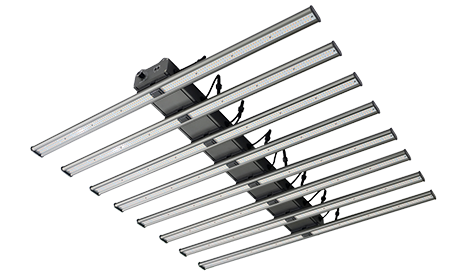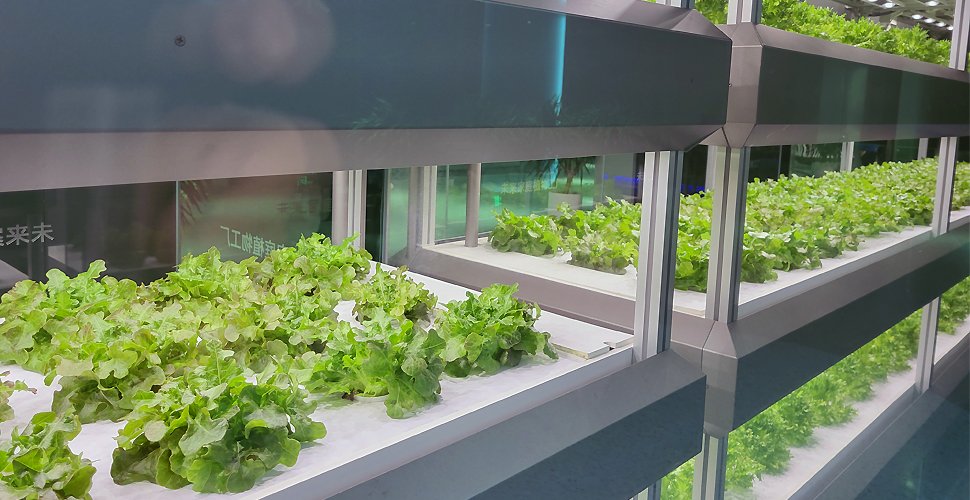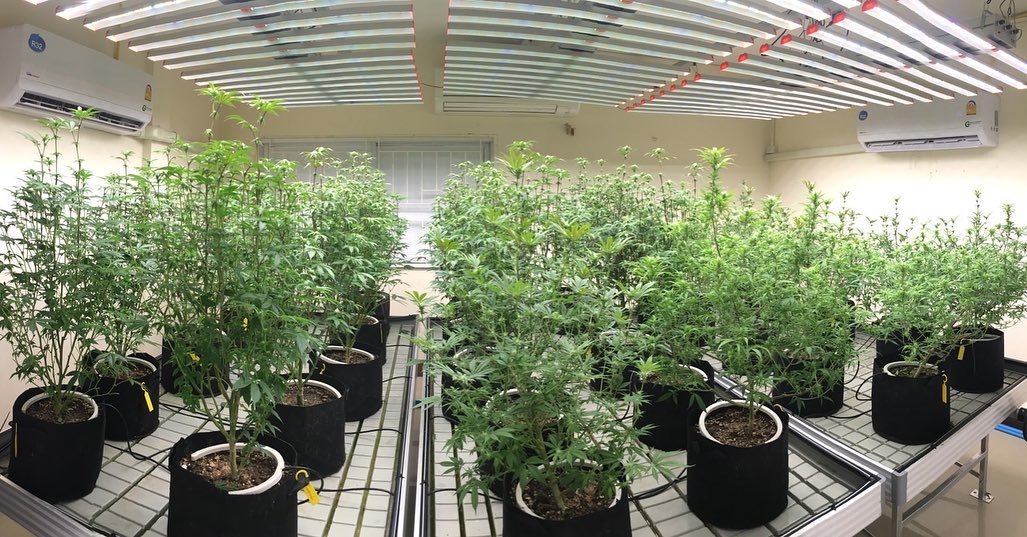Tabla de contenido
The consequences of global warming are increasingly being felt and temperature changes are affecting the hydrological cycle, precipitation patterns, frequency and duration. In some parts of southern Europe, the situation is already critical with recurring heat waves and droughts. In high latitude areas, extreme cold and high humidity in summer are the main constraints. As a result, farmers worldwide are facing the pressure of protecting grape varieties and maintaining stable quality and yield.
The current evolution of climate change prompts a reflection ‘Would it be possible that growing grapes indoors in a protected environment? ‘ For that reason, greater numbers of people are trying growing grapes indoors, either at home or in a greenhouse. It may not be easy, but if you know about planting, growing your own grapes easily is not a big problem.

The Best Grape Varieties for Greenhouse Growing
One of the most difficult parts of growing grapes in a greenhouse is deciding the varieties to grow. Do you know that there are more than 500 grape varieties to choose from? Five kinds of grapes that grow well indoors have been selected for you to choose from.
- MUSCAT OF ALEXANDRIA: A white wine grape is best eaten fresh, but can also be used for wine production. Known for its sweetness, intense aroma and long shelf life. Drought-tolerant but regular watering requires enough space.
- MUSCAT HAMBURG: The red Vitis vinifera grape variety is widely grown for wine production, but it is also a delicious and juicy grape. Fast growing and very heat tolerant, it should be grown in well-drained and moist soil.
- GOLDEN MUSCAT: Golden Muscat is the standard for grape growing in the United States. It is best known for shining in wine, but can also be eaten as a table grape.
- CANADICE: Canadice is a red, seedless grape that is sweet, juicy, and has a distinctive, slightly spicy flavor. It has moderately sized clusters.
- INTERLAKEN SEEDLESS: It is an early maturing variety, making it particularly ideal for greenhouse growth.
There are also some varieties suitable for potting (home growing): Seyval, Swanson Red and Early Muscat.

How to Grow Grapevines in a Greenhouse?
Grapevines tend to occupy a considerable amount of space in their leaves and roots. For a small greenhouse, one vine is sufficient. Conversely, for larger greenhouses, the distance between each vine should be 1 meter. There are three main ways to grow vines in a greenhouse: planting with the roots outside the greenhouse and growing the vines into the greenhouse, growing the vines directly inside the greenhouse, or planting and growing the vines in containers such as pots or tubs.
Tips for Growing Grapes Indoors
1) Planting the roots outside
This method of planting not only saves space in the greenhouse but also potentially reduces the amount of greenhouse irrigation needed to keep the grapes moist. By allowing the roots to reach outside, they are able to absorb water and nutrients from the surrounding soil. Note that the soil outside will stay colder longer than the soil inside your greenhouse. So if your climate experiences a particularly cold winter, vines planted in this manner may be delayed in starting.
2) Planting with the roots inside
If your greenhouse does not have solid ground, you can plant the vines directly in the soil inside the greenhouse. In view of the fact that vines need a fair amount of space to stretch their roots, you should plant each vine at least 2-3 feet away and away from other plants.
3) Container planting
Can you grow grapes indoors? Container planting is the third option for growing vines successfully. You can plant your vines in pots, jars or even large hanging baskets. Pots and jars are ideal for vines that need at least 15 gallons of water to grow well.
How to Take Care of Vines in a Greenhouse?
1) Sunlight
How much light does the grapevine need? Grapevines love sunlight and need at least 6-8 hours of direct sunlight during the growing season for optimal growth. If your greenhouse has some shade during the day or uses shade cloths, you will be fine as long as you have plenty of indirect light throughout the day. If your greenhouse does not meet these light requirements, you can get up to 12 hours of light by using a horticultural LED grow light, and your fruit production will be even higher. An in-depth reading of this post on how to choose a LED grow light may help you.
2) Soil
What sort of soil should I use to grow grapes? You can use organic materials (such as manure, leaf mold or composted yard waste) to improve existing soil. Different types of soil vary greatly in texture and moisture content. If you plan to use a potting mix, make sure it contains a lot of organic material, such as peat moss, which helps retain moisture and improves drainage at the same time.
3) Temperature
What is the best temperature for growing vines? For ideal vine growth, the temperature in the greenhouse should be maintained above 70°F throughout the day, with only a minimum drop at night. Please note that 77-90°F is the ideal temperature for fruit development. Also, make sure there is adequate air circulation in the greenhouse. Although grapes need those warm temperatures to grow, if your greenhouse is too hot, the vines may suffer.
4) Watering & Fertilizing
| SEASON | WATERING TIME | FERTILIZATION TIME |
|---|---|---|
| Early Spring (before the growing season) | Start watering after sowing the seeds | First fertilization: choose a fertilizer containing nitrogen to help growth |
| Spring (start to grow and buds appear) | Water every 2 to 3 days. Keep the soil moist by adding enough water to moisten the soil to a depth of about 10 inches | Fertilize every three weeks with a fertilizer high in potassium and phosphorus |
| Summer (flowers and lots of leaves appear) | Water every 2 to 3 days. If the soil feels dry at a depth of about 1 inch, water the plants | Fertilize once a week with a fertilizer high in potassium and phosphorus |
| Autumn (grapes grow and ripen gradually) | Avoid overwatering plants as this can rot the roots and kill the plant | Stop fertilizing when the fruit is ripe and allow the product to sweeten |
| Winter (period of dormancy) | Reduce watering | Fertilization is not needed |
5) Prevention of Diseases and Pests
Growing vines in a greenhouse provide a degree of protection from pests and diseases, but there is also a risk of pests being present. To prevent pests and diseases in your greenhouse, you should do your best to remove visible insects by picking, spraying (with water) or shaking the plants. You should also keep your greenhouse free of debris and weeds to avoid decay and the possible introduction of disease to other healthy plants. For grapevines in particular, keep an eye out for pests such as aphids, mealybugs and red spiders. If left unchecked, powdery mildew can wreak havoc on grapes.
When Should You Prune a Vine?
You can train the vines to grow along the lattice or arbor by gently weaving the vines at the beginning of the growing season. You should also prune the stems regularly to promote branching and increase fruit production and sweetness. If it is not dealt with in a timely manner, it will become more difficult to manage over time. Grapes need to be pruned at the end of the growing season to 90%. Don’t worry, it’s to prepare the vines for next spring and your vines will grow vigorously next season!
Click here and watch the video to learn how to prune a vine.
Winter Management of Greenhouse Grapes
When the temperature drops, the early frost is about to fall, and the grape leaves go from yellowing to falling off, it is a sign that the plant will soon enter winter sleep. In order to make the grapes in the greenhouse safe to overwinter, the following work must be done.
1) Winter Pruning
Grape pruning needs to be done within half a month after the leaf fall. In winter, the pruning of greenhouse grapes is basically the same as that of general open-field grapes, but there are slight differences in the specific pruning methods. The winter pruning of greenhouse grapes should be done by cutting the parent branches shorter and leaving more branches so that the new tips can be adjusted neatly. When pruning branches, keep 3 to 5 cm in the combined part with the main stem.
There are two types of pruning: short pruning and renewal pruning. Short pruning is for the main vine and renewal pruning is for the old vine.
Short Pruning: 8 to 12 buds for long vines, 5 to 7 buds for medium vines, 2 to 3 buds for short vines, for varieties with high fruit-bearing vines, the short and medium vines are the main method of bud retention.
Newer Pruning: First, the new buds that grow from the base of the grapes are selectively cultivated, and when the new buds can bear more fruit spikes, the senescent vines are cut off immediately; second, the renewal of the fruit-bearing vines should be weaker and stay stronger, leaving the top, leaving the front.

2) Clean Up Debris
In winter, the vineyard should be thoroughly cleaned: sweeping residual branches and leaves; picking up diseased fruits; and eradicating weeds. The vines should then be buried or burned. Before the grapes sprout, you should also spray the trunk, branches and soil of the grapes once or twice with a 5-degree Pomaceous sulfur compound to kill the pathogens and reduce the incidence the next year.
3) Burying Soil to Prevent Cold
To some extent, the yield of grapes is proportional to the amount of fertilizer applied. Depending on the actual situation, the yield can be determined by the amount of fertilizer applied or the amount of fertilizer applied by the yield.
Generally, for every 500 kg of grapes, 1,000 kg of high-quality organic fertilizer with phosphorus and potassium fertilizer is needed. The amount of nitrogen fertilizer applied in the base fertilizer accounts for 60% to 70% of the year, phosphorus fertilizer accounts for more than 80%, and potassium fertilizer accounts for 30% to 40%.
Advocate the ground in the vineyard-covered with straw, cover the thickness of about 20 cm, both insulation and moisture preservation, weed suppression, straw decay and can improve the soil.
4) Investment Heating Greenhouse
Grapes are a temperature-loving crop with poor cold tolerance, and it has a limited planting time as winter is a dormant period for grapes.
However, you can also build heated greenhouses to break the dormancy of grapes through human manipulation to enhance the yield and enter the market earlier. Heated greenhouses are equipped with heating systems such as ambient air, diesel engines, firewalls and other equipment, and additional mulch is added to the shed.
Grapes are a light-loving crop and can use indoor plant growing lights to supplement light in winter when there is not enough sunlight. The main function of LED grow light is that it can replace sunlight to supplement the light needed by plants.
And in addition, it can play a good sterilization and heat preservation effect in winter. Plant fill light can be used in vegetable greenhouses, flower greenhouses, fruit greenhouses, plant factories and home planting. LED plant light can not only fill light to plants, but also increase the yield of fruits, advance the market time, and improve the proportion of various nutrients. For flowers, it can also control the flowering period and make their color more vivid.
How Long do Grapes Take to Grow?
It depends on whether you are growing from seed or grafting plants.
In general, it is best to use grafted plants because you can harvest grapes in 150-170 days. If you choose to grow grapes from seed, you will need to start the planting process earlier than with cuttings and it may still take up to 3 years before any fruit is produced.
When to Harvest Grapes?
The ideal time to harvest your grapes is from September to October. However, you need to determine if your grapes are ripe based on the following signs.
- If the grapes are soft and juicy to the touch, then they are ready to be picked.
- You can also look for the seeds inside the grapes, which turn from white to brown when the grapes are ready to be harvested.
- Taste the grapes. If they taste sweet or you like the way they taste, then go ahead and pick them.
How do I Store Freshly Harvested Grapes?
- Grapes can be stored in airtight containers and refrigerated for up to 3 weeks. When storing grapes, do not wash them. Water will cause grapes to ripen and shorten their shelf life.
- Grapes can also be frozen for later use, using them within a year for optimal quality. Frozen grapes can be eaten as a snack, thawed for a few minutes and then served or used in smoothies and desserts.
- Another way to store grapes is to dehydrate them, and dehydrated grapes are called raisins. They make great snacks and are also used in baking and other recipes.
Why Don't Grapes Bear Fruit?
With proper care, vines usually increase their yield with the seasons. But after planting for upwards of three years and not seeing any fruit or fruit that has stopped producing, there may be several factors that could be contributing to this situation.
- Make sure your plants get at least 7 hours of direct sunlight per day. Grapevines cannot blossom correctly without getting enough sunlight. If you find that you need more sunlight, you can use indoor plant growing lights.
- Review how you are pruning your vines, over or under pruning can affect flower and fruit production.
- Reduce the amount of fertilizer you use to make sure you don’t overload your plants and cause a decrease in grape production.
- You can try to help the pollination process by gently shaking the plants or placing fans on them to promote pollination. In rare cases, you will get a vine with only male or female flowers. If this happens, you will need a second vine nearby for cross-pollination.
- Double check that the plant is not infected with fungi, bacteria or other pests. Look for signs of disease and treat accordingly.
Can You Grow Vines Hydroponically?
Growing grapes indoors hydroponically is a relatively new and innovative way of growing grapes.
The idea of growing them in this way is to reduce the space required and the time needed for harvest. Hydroponic grape production is a great option for those who want to grow their grapes but don’t have the space to grow traditional vines. Hydroponic grapes can be grown in small areas and do not require a lot of maintenance.
1)How much time does it take to grow grapes indoors hydroponically?
The only downside to growing grapes hydroponically is that the vines may take some time to mature, although it is still faster than growing grapes outdoors in the traditional sense.
The time required to grow hydroponic grapes will vary depending on the type of hydroponic system you are using. If you are using a deep-water cultivation system, it will take less time than if you are using an aeroponic system. Another good method is to change the nutrient solution in your system every two weeks. In addition, the climate in which you live will also affect the time it takes for the grapes to ripen. On average, it can take three to five years to produce grapes.
2) How to grow hydroponic grapes?
Now that we know a little about grapes, let’s discuss how to grow them. The first step is to buy a hydroponic system. There are many different types of hydroponic systems on the market and you will need to choose the one that fits the size of your garden (deep water culture systems are best for small gardens, while aeroponic systems are better for larger gardens). Then, you will need to plant the vines. Ensure that they are evenly spaced so that they have room to grow. After planting, you will need to monitor the plants closely to make sure they are getting enough water and nutrients.
3) What type of hydroponic system is best for growing?
When growing grapes hydroponically, almost any type of hydroponic system can be used – it largely depends on personal preference. Hydroponic grapes are usually grown from hardwood plugs. These can be obtained from healthy vines in late fall or early winter, preferably from plants grown outdoors, so you don’t have to worry about growing plants from seed.Click please check out one of our hydroponic systems which are hydroponic systems equipped with LED plant lights. Choose the right horticultural LED grow lights and use them, which will promote the growth of vines as well as get light in winter.
jayes
Como gerente de marketing digital en AUXGROW, Jayes combina la pasión por los sistemas hidropónicos y la experiencia en luces de cultivo LED. Con experiencia práctica y un profundo conocimiento, Jayes le guía a través del mundo del cultivo sostenible.









